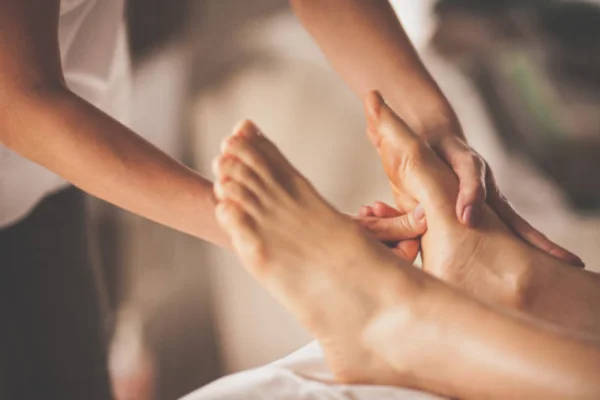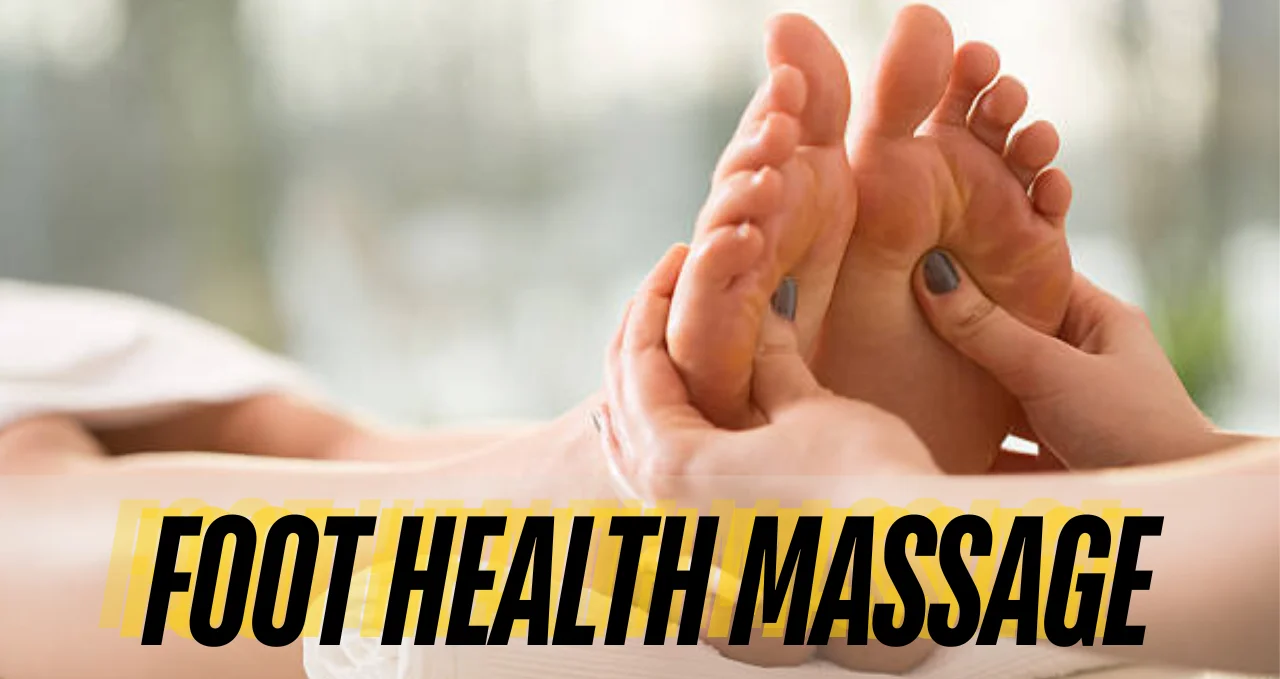Have you ever stopped to think about how much your feet do for you every day? They carry you through your daily routine, bear your weight, and keep you balanced. Yet, they are often neglected when it comes to self-care. One of the best ways to show your feet some love is through foot health massage. But what exactly is foot health massage, and how can it benefit you? Let’s dive into this fascinating topic and discover how a little pampering can go a long way in improving your overall well-being.
What is Foot Health Massage?
Foot health massage is more than just a way to relax; it’s a therapeutic practice that involves manipulating the feet to promote overall health and well-being. This type of massage targets specific pressure points in the feet, which correspond to different parts of the body. By applying pressure to these points, you can alleviate pain, improve circulation, and enhance your body’s natural healing processes.
Why Foot Health Matters
Our feet are the foundation of our bodies. Just like the foundation of a house, if there is an issue with your feet, it can affect your entire body. Poor foot health can lead to problems like back pain, knee issues, and even posture problems. It’s amazing how something as simple as a regular foot massage can make a huge difference.
The Benefits of Foot Massage

Foot massages are more than just a relaxing treat. They offer numerous health benefits, including:
- Improved circulation: By massaging your feet, you can increase blood flow, which helps to nourish your muscles and tissues.
- Reduced stress and anxiety: Foot massage helps to relax the entire body, promoting a sense of well-being.
- Pain relief: Regular foot massages can alleviate chronic pain, such as plantar fasciitis or arthritis.
- Better sleep: A foot massage before bed can improve your sleep quality by relaxing your muscles and mind.
Understanding Reflexology
Reflexology is an ancient practice that involves applying pressure to specific points on the feet. These points correspond to different organs and systems in the body. By stimulating these points, reflexology aims to promote healing and overall health. Imagine your foot as a map of your body, with each pressure point leading to a different destination.
Types of Foot Massages
There are several types of foot massages, each with its unique benefits:
- Swedish foot massage: Uses long strokes and kneading to relax muscles and improve circulation.
- Deep tissue foot massage: Focuses on the deeper layers of muscle tissue to relieve tension and pain.
- Reflexology: Targets specific pressure points to promote overall health and well-being.
- Shiatsu: A Japanese technique that uses finger pressure to balance the body’s energy.
How to Perform a Foot Massage
Performing a foot massage at home is easy and doesn’t require any special skills. Here are some steps to get you started:
- Start with a warm-up: Soak your feet in warm water for 10-15 minutes to relax the muscles.
- Apply lotion or oil: This helps reduce friction and makes the massage more comfortable.
- Massage the toes: Gently pull and twist each toe.
- Work on the sole: Use your thumbs to apply pressure to the arch and heel.
- Finish with the top of the foot: Use gentle strokes to massage the top of your foot.
Tools and Accessories
Using the right tools can enhance your foot massage experience. Here are some popular options:
- Foot rollers: These are great for applying consistent pressure to the soles.
- Massage balls: Perfect for targeting specific areas.
- Electric foot massagers: Offer various settings and intensities for a professional feel.
- Lotions and oils: Help reduce friction and nourish the skin.
Foot Massage Techniques
Different techniques can be used during a foot massage to target various muscles and pressure points. Some common techniques include:
- Thumb walking: Using your thumbs to walk across the sole of your foot.
- Kneading: Gently pressing and rolling the muscle tissue.
- Friction: Rubbing the skin to generate heat and improve circulation.
- Percussion: Tapping the foot lightly to stimulate nerves and muscles.
When to Avoid Foot Massage
While foot massages are generally safe, there are certain situations when you should avoid them:
- Injuries: If you have a sprain, fracture, or open wound, it’s best to let your foot heal before getting a massage.
- Medical conditions: People with diabetes, blood clots, or severe circulatory issues should consult a doctor before a foot massage.
- Pregnancy: Certain pressure points can induce labor, so it’s important to get approval from your healthcare provider.
Foot Massage and Stress Relief
Stress is a part of everyday life, but did you know that foot massage can help manage it? By targeting specific points on the feet, you can reduce tension and promote relaxation throughout your body. It’s like hitting the reset button for your mind and body.
Foot Health Tips
Maintaining good foot health goes beyond regular massages. Here are some tips to keep your feet in top shape:
- Wear proper footwear: Choose shoes that fit well and provide adequate support.
- Keep your feet clean and dry: This helps prevent infections and other issues.
- Trim your nails properly: Avoid cutting them too short to prevent ingrown nails.
- Moisturize your feet: Keep your skin soft and prevent cracks.
Professional Foot Massage Services
If you prefer to leave foot massages to the professionals, there are many options available. Massage therapists are trained to understand the intricacies of foot anatomy and can provide a more comprehensive massage. Look for reputable spas or clinics with certified therapists.
Common Foot Problems and How Massage Helps
Foot health is vital for overall well-being. Many people experience common foot problems like plantar fasciitis, bunions, and heel pain. Massage therapy can help relieve these issues. Here are some basic strategies for foot health massage.
Plantar Fasciitis
Plantar fasciitis causes pain in the heel and arch of the foot. Massage helps by loosening the tight fascia. Use your thumbs to apply pressure along the arch. Move in small, circular motions. This can reduce pain and improve flexibility.
Bunions
Bunions are bony bumps at the base of the big toe. They can be painful and swollen. Massaging the area can help reduce discomfort. Use gentle, circular motions around the bunion. This helps increase blood flow and reduce inflammation.
Heel Pain
Heel pain can be due to various reasons. One common cause is overuse. Massaging the heel can alleviate this pain. Use your thumbs to press and knead the heel. Focus on the areas that feel sore. This can help relieve tension and promote healing.
Foot Cramps
Foot cramps are sudden, painful contractions of the muscles. Massage can help relax these muscles. Use your fingers to apply gentle pressure to the cramped area. Rub in circular motions until the cramp eases. This helps improve circulation and reduces pain.
General Foot Health
Regular foot massages keep your feet healthy. They improve blood flow and relieve stress. Spend a few minutes each day massaging your feet. Use lotion or oil to make the massage smoother. This routine can prevent many common foot problems.
The Connection Between Foot Health and Overall Wellness
Choosing the Right Techniques When massaging your feet, start with gentle pressure and gradually increase as you go. Focus on the sole and the heel, where tension often builds up. Use circular motions with your thumbs to work out knots.
Improving Circulation Massage helps to boost blood flow in your feet, which can reduce swelling and improve warmth. Begin at the toes and work your way up to the ankles. This helps distribute blood evenly throughout your feet.
Relieving Muscle Tension To relax muscles, use long strokes along the length of the foot. Apply firm but not painful pressure. This can ease tightness and promote flexibility, especially after a long day on your feet.
Promoting Relaxation Include aromatic oils like lavender or peppermint to enhance relaxation. Apply a small amount to your hands and rub them together before starting the massage. This adds a soothing scent to the experience.
Maintaining Flexibility Incorporate gentle stretches into your foot massage routine. Pull each toe gently and rotate it to loosen joints. Flex and point your foot to stretch the muscles on the top and bottom of your foot.
When to Avoid Foot Massage
During Pregnancy It’s best to avoid foot massages during pregnancy, especially during the first trimester. Certain pressure points on the feet can potentially induce contractions or affect other areas of the body.
Open Wounds or Skin Conditions If there are open wounds, cuts, bruises, or any skin conditions on the feet, it’s wise to refrain from massaging them. Massaging could worsen the condition or introduce bacteria, leading to infections.
Recent Foot Injuries If you’ve recently injured your foot or ankle, it’s advisable to wait until the injury has healed before getting a massage. Massaging too soon could aggravate the injury and delay recovery.
Foot Pain of Unknown Cause If you’re experiencing foot pain and are unsure of its cause, it’s important to consult with a healthcare professional before getting a massage. Massaging without knowing the underlying cause could potentially worsen the condition.
Medical Conditions People with certain medical conditions such as diabetes or circulatory issues should consult their doctor before getting a foot massage. Conditions like these can affect how the body responds to massage therapy.
Frequently Asking The Questions
Are foot massages healthy?
Foot massages can be beneficial for relaxation, improving circulation, and relieving foot pain. They can also promote overall well-being by reducing stress and tension throughout the body.
What is a medical foot massage?
A medical foot massage involves therapeutic techniques aimed at addressing specific foot conditions or health issues. It may include targeted pressure points and stretches to alleviate pain, improve mobility, and support overall foot health.
What type of massage is best for feet?
A combination of techniques works best, including Swedish massage for relaxation, deep tissue for muscle tension, and reflexology to stimulate specific points. Choose based on your needs—relaxation, pain relief, or health improvement.
Can I massage my feet everyday?
Yes, it’s generally safe to massage your feet daily. However, adjust the intensity based on comfort. Regular foot massages can help maintain flexibility, reduce tension, and improve circulation, benefiting overall foot health.
How long is a good foot massage?
A good foot massage typically lasts 15 to 30 minutes per session. This duration allows enough time to work on both feet thoroughly, targeting areas of tension and promoting relaxation without overtaxing the muscles.
Conclusion
Integrating foot health massage into your self-care routine can significantly enhance your overall well-being. By addressing specific pressure points, improving circulation, and promoting relaxation, foot health massages not only alleviate pain and reduce stress but also foster healthier feet. Regular sessions provide a simple yet effective way to maintain foot health and support your body’s natural healing processes.

